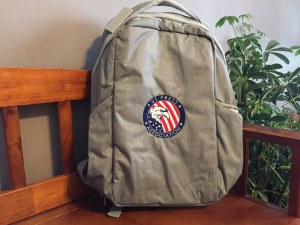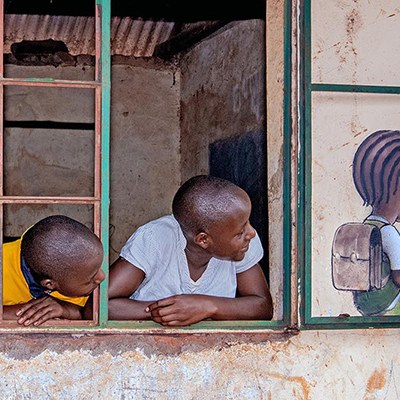Bare Naked Necessary Skills. What must be maintained?
-
Category
-
Submitted By
-
11Nov, 2020
Today, I want to get away from all the rhetoric, and propaganda, and talk about getting out alive. In today’s show I want to talk about the bare minimum skills necessary to survive. We’ve talked about the mental skills necessary to survive, and we’ve glossed over the physical skills, but what about the actual technical survival skills necessary to come out on the other side. Those precious seconds following a dramatic event that can mean life or death, simply put. I want to thank Myron L. from Lafeyette, Louisiana for this week's topic, and thank you for listening to the show, as well as your email conversation. I sincerely enjoy providing information to those who are new to the prepper subculture. Myron asked me about securing his brand new family, especially living in a seismically active area.
Today I want to strip away all the publicity, all the smokescreen, and get down to the brass tacks to survival. Real world survival.
To illustrate my point, I’m reminded of a time in my past where I had gone on extended Search and Rescue operations that led us deep into the high northern Cascade mountains of Washington State. During one particular event, the partner I was teamed up with was incredibly unprepared for what turned out to be a very long, and challenging, night. It had been raining for most of that day, and the prior one, so the ground was heavily saturated. This led to a substantial landslide that pinned us in a medium sized valley, soon after scouting for another exit, it became dark. I located an large enough alcove and made camp, and pitched my two man tent. As a K9 handler, I typically let the K9 have half the tent, but this time we all wound up sharing. With the temps hovering in the low 40s, and soaking wet, I used the cover provided by the alcove to help block the weather and start a fire, for warmth, cooking, and clothes drying. This team member didn't understand the first thing about survival, for his sake, it's was a good thing I knew quite a bit. While he packed a standard lunch of peanut butter and jelly sandwiches and granola snacks, my K9 had her kibble and I an delicious, warmed, MRE and snack. We were in contact via radio, and had a GPS, so although we were trapped for the night, we knew the helicopter could get us by daylight. This memory flooded into my mind when breaking survival skills down to the lowest common denominator. The difference really is “prepare for the worst, hope for the best.
Lets talk about a situation that you are going to need to have a survival toolbox at-the-ready. The scenario we are going to use as our example today is a 7.4 quake that leaves the residential home heavily damaged, and all utilities are not functioning. No vehicular traffic in, or out of the community, as the only road to your community has a fifteen foot gap in the roadbed with a six foot elevation difference. All of the nearby homes are just as damaged, if not more damaged than the one you're in, The outside local temps are in the mid 40s, and the sky is overcast and dark.
Now I’m not trying to wear a tin foil hat on this one, simply throwing out three different scenarios that will need a different set of skills to ensure one comes out on top. Let’s take each scenario and identify some bare naked skills necessary to be successful. We should all know by now, that having a plan is critical to getting, and staying, safe and healthy. One of the things I used to teach my survival students is, it’s a mental game. With infant children, through young adults, they will feed off of your energy. If you begin to demonstrate panic, or fear, they will amplify it. So whenever you find yourself in a serious situation, the first step is to quash the fear and do not let panic seep in. This is the mental game we’ve discussed throughout other shows, the key here is to remain calm, think deliberately, follow your checklist, live to tell the story.
As I mentioned before, our scenario is today is a massive quake. In many cases, earthquakes can be one of the most destructive and emotionally damaging. So we need a step-by-step guide to get us through until it’s safe and we reconnected with the society we live in.
So, you’re trapped in personal residence. This is one of the most probable scenarios that many of us will face, particularly along the ring of fire around the Pacific Ocean. Here in Alaska we had a pretty good shaker back in late 2018, and although it ended up doing very little structural damage to my home, but I know North of us here in Anchorage sustained a lot more. Had it lasted a little longer, it could have been substantially more destructive and probably be more deadly. So let’s look at this scenario and determine our first steps toward recovering. As I mention each of these points, we need to consider those who live with us, do they some level of compromise? Are the physically handicapped, making movement to other parts of the home challenging. I reminded of a story that another listen told me about surviving Katrina many years ago. As a wheelchair bound individual, while he had an upstairs, his only way up there was an electronic stair climber, which he had no power. As the water rose, his family members helped him upstairs, out a window, to the roof where they were rescued by helicopter. There are many pieces that we need to be sure we consider when preparing for worst-case scenarios.
So, let’s look at our scenario in step-by-step fashion:
Do you have clean, breathable air? After any structural damage like this, natural gas lines could be severed, or two chemicals within the house could be combined to make a toxic gas. So, our first mission here is to ensure that we can breathe.
Is the structure safe to stay in? In all homes there are “weight bearing walls”, and non weight bearing walls. When considering the safety of your residence after a quake, or other natural disaster, we want to ensure that the weight bearing walls are in good condition. Not all exterior walls are weight bearing depending on the build of the home. Learn what to look for, and make sure they are safe.
Is anyone hurt? This could be a big one, depending on the disaster. Many of the immediate care facilities are going to be overrun within a very short time following a substantial crisis, so being able to treat many of the smaller injuries yourself could become the difference.
All right we’ve made it over the initial impact of the event. We’re not out of the woods yet, but we’re moving in the right direction. Our next big quest is to obtain a lighting source, and we’ll need a heat source fairly soon. Right now if we can secure jackets or, even blankets, that will give more time to get a heat source. But for now, having a flashlight, or light source. As I mentioned in our scenario, it’s overcast and darker. The reason we want light is a couple fold, firstly we really want to avoid unnecessary risks of bumping into something and causing injury. The second reason is that depending on the amount of damage, again we could unnecessarily step on something that has fallen or broken apart, so we really want to see where we’re stepping. Our goal here is not adding to an overburdened medical system.
If you have openings to the outside, now would be a great time to get them covered up if possible. Ideally you would try to secure yourself in a less trafficked area of your home. The less traffic, the less openings, the better chance you’ll have at maintaining a normal temperature. So this really becomes the next focus. Getting an area with some type of heat source that the family can hold up in.
The immediate concerns are tackled, this is making sure the family is safe. Next is the outside of the home. We’re looking for obvious problems, water or gas line breaks, maybe even power lines down. Remembering our safety briefing about power lines, they can energize you through the ground, so keep an eye out for them. In many parts of the country energy now enters homes underground, but be careful around that junction box. Look for fires and other damage, as well as possible future issues (tree leaning towards the house). So, just take it all in, tip here is don’t spend too much time out there. Remember your smaller heat source will take a little longer to get the temp back up.
Ok, outside noted, family safe and starting to build up heat. Now we can start moving up through the remainder of our “top five”. Water, then food, and protective gear. The key here is that we want to eliminate any unnecessary risks, as the first responders and medical system as a whole is overwhelmed, so we need to careful both inside and out.
As we discussed with this scenario, our five bare necessities (top five) came into play.
Clean air with 3 minutes.
Shelter within 3 hours includes temperature.
Drinkable water within 3 days.
Nutrition within 3 weeks.
Protective clothing/gear
If we boil anything down to its core, we discover that our “fab five” are really the difference between success and failure in the world of survival. We have to secure these in order, but, we need to make sure we consider what the future holds for each of them. With a disaster type of event it will be a very dynamic environment which may cause further changes in plans. Especially with earthquakes, you may have after shocks which could cause further instability, so securing your scenario as quickly as possible is super important.
One of the other points that we glossed over in our scenarios was the idea that, off the beaten paths in many parts of our beautiful planet, humans are not the top of the food chain. While the number of aggressive animals are small, the large lumbering type animals can be quite deadly when cornered, or in some cases, by accident. So, not only will you have to content against the five items above, you may have to fend off hungry predators. In addition, there are those among us who will take advantage of the situation, so security may become a requirement fairly quickly.
So, where do we get the skills? Where do we start? Great question. The key is to do research now. Plenty of sources on the internet, tons of courses out there. A little study goes a long way here, and starting by looking at the FEMA website, the Red Cross site, or many others. Do your research, research where you get your info, but there is tons of it.
Some tips that I discussed with Myron was:
Earthquake straps for larger pieces of furniture. This will prevent them from falling and potentially injuring someone.
Museum putty for items on high shelves, essentially this minimizes the chance them falling and/or shattering.
Baby proof all the cabinetry to prevent them from being pushed open during this event.
Have tarps and extra blankets that can used to block off rooms, or broken windows.
All right, well there we have my two cents. I sincerely appreciate you spending this time with me. I hope that this informations sets you on a path of discovery that allows you to keep your family and self safe. As always, have questions or comments, by all means drop me a line.
You can reach the Alaskan Outlaw at @ or visit his webpage at https://akoutlaw.com
[Submitted by Mark Weisman]
---
https://akoutlaw.com


















